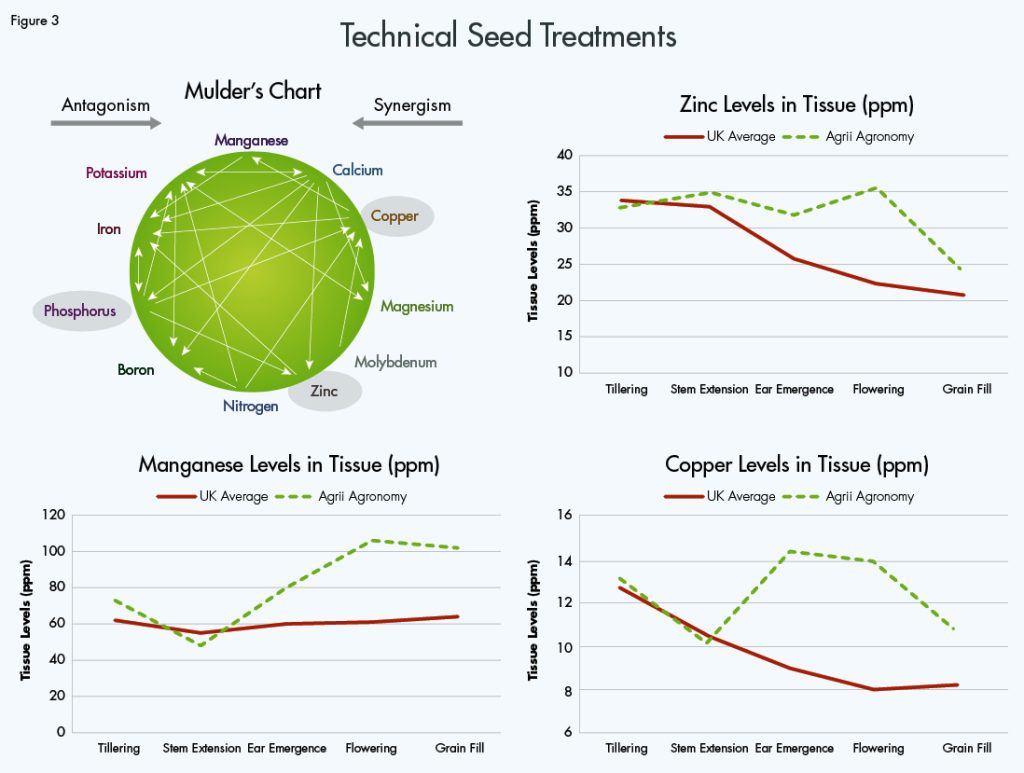Following the atrocious conditions last autumn, most certified spring seed was sold out well before Christmas. Even then, the eventual supply of certified seed is still subject to germination, and there have already been some widespread issues caused by the difficult harvest last year.
That leaves farm-saved seed as almost the only possible option for growers still needing to source spring crops to drill fields. Demand is expected to increase by 30-40% on a typical spring cereal season. So, it is worth considering what growers need to do as a priority.
Germination Tests
It is important to get a full germination test by a recognised laboratory. This is especially where grain is used that may not have been originally earmarked for seed. In this instance, it is important to tell the seed lab if glyphosate was applied. While the latter is far from ideal, any abnormal seedlings can be accounted for by increasing the seed rate.
Disease and Treatment
Loose smut remains the priority of disease control, and there is clear evidence to show that the level of loose smut activity you get from ipconazole is better than prothioconazole so that puts Rancona i-Mix as the top technical treatment (Figure 1).
While crops can pick up net blotch from neighbouring crops, the seed-borne route is also quite important in spring barley. We have shown that the ipconazole/imazalil combination in Rancona i-Mix gives the best control (Figure 2). Other diseases like leaf stripe are rarely found nowadays, and seedling blights tend to be less of a problem as spring crops are generally drilled into warming soils.
Last spring, around 14% of farm-saved spring barley seed was not treated with fungicidal seed treatments, and these crops will be most at risk from seed-borne diseases. It is crucial seeds are tested for disease because they can go from nothing to causing significant crop losses within a couple of seasons.
Crop Nutrition
Nutritional seed treatments should also be considered. Some ground-breaking research by Agrii and Lancrop Laboratories identified through analysis of thousands of tissue samples at different growth stages that spring barley clearly required adequate manganese, zinc and copper during the early stages of growth (Figure 3). This was the basis for Agrii’s product range of high-load seed treatments, i-Man (manganese), Zax (Zinc) and Fielder Copper.
Spring barley has always been grown on lighter soils and calcareous soils to achieve lower nitrogen levels historically preferred by the maltsters. Manganese has always been used on these soil types because of soil deficiency or lack of availability.
Since 2013, spring barley has been grown more widely because of black grass pressure and few spring-rotational options. It generally goes for feed, but some contracts can accept higher grain nitrogen. Results from over two hundred trials show that these crops respond to i-Man despite no apparent deficiency or lack of availability.
The evidence suggests that i-Man should be used as standard and i-Man plus Zax for an additional boost to yield (Figure 4). While these nutrients can be applied later on, seed treatments help to bridge the hunger gap that all spring crops experience and get them off to a better start.



Seed Rate and Seed Cleaning
Farm-saved seed is not under the same restrictions as certified seed, so where germination is less than 85%, seed can still be used, and the seed rate adjusted to account for any losses. Of course, one of the other advantages of farm-saved seed is the ability to process the seed crop more intensively to select a bigger and bolder sample. Any screening losses can simply be returned to the heap.
It is for all the reasons stated above that farmers should plan their seed requirements carefully rather than being tempted to barn-dip by taking grain straight from the heap. In the UK, we enjoy the benefits of good seed health largely due to the certified seed industry and a professional approach to farm-saved seed.
Planning Ahead
Agrii also has good upside seed treatment capacity for the upcoming spring with its large fleet of mobile dressers and flexible staff. However, this year, it will be more important than ever for growers to plan ahead to ensure they get their seed processed when they want it.



